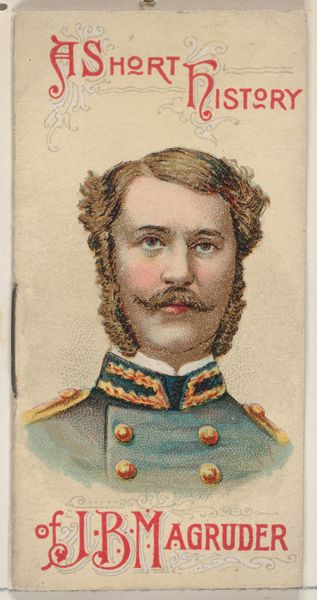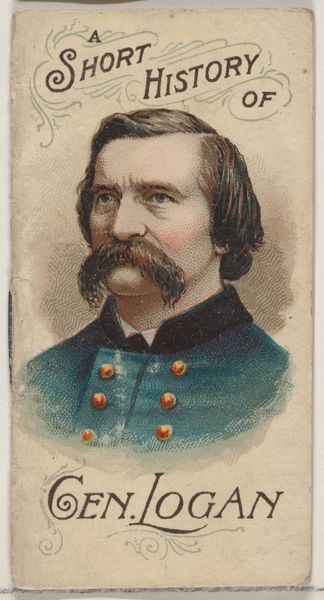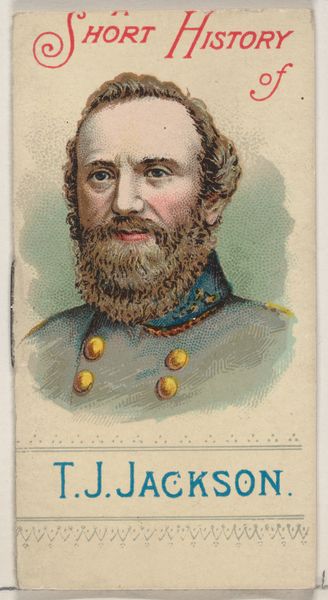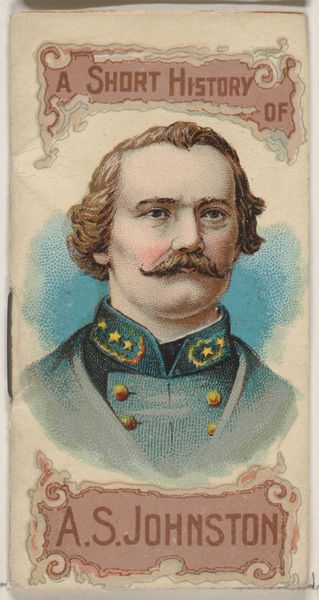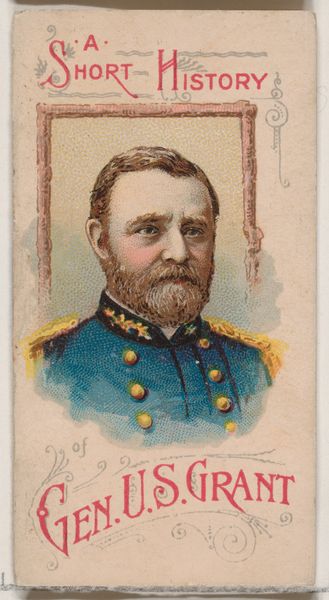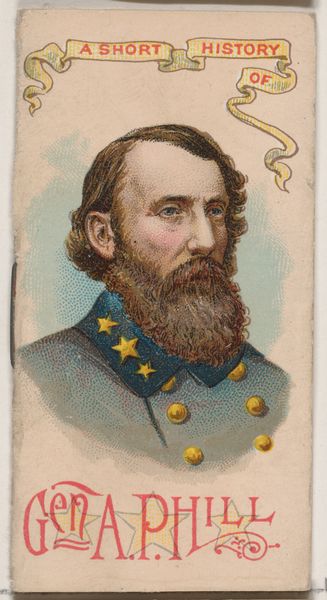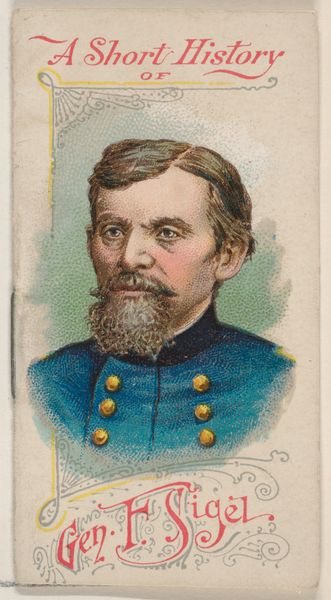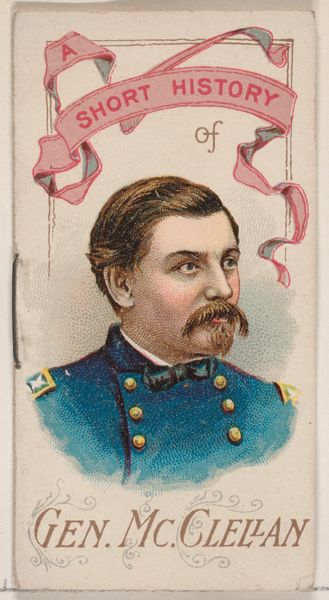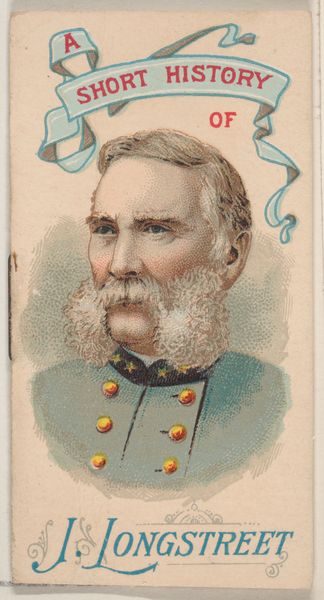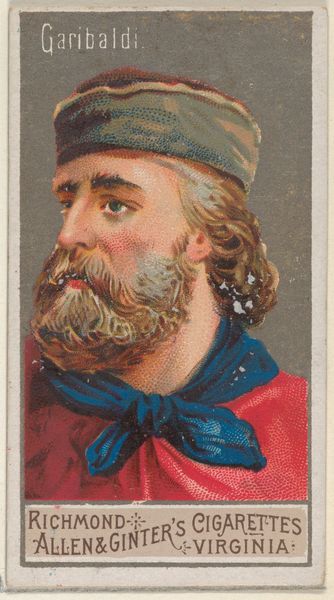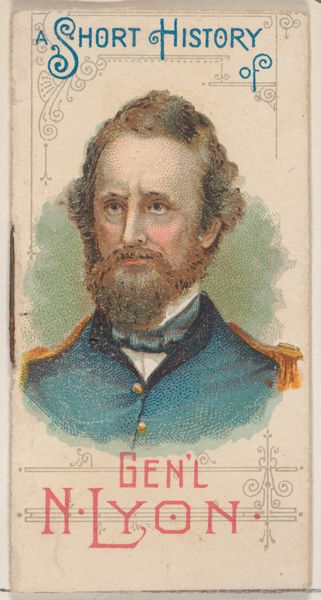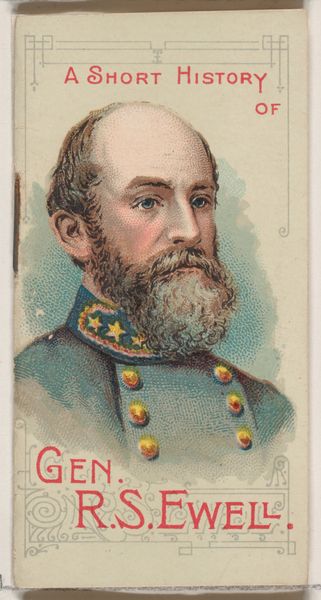
A Short History of General George Edward Pickett, from the Histories of Generals series of booklets (N78) for Duke brand cigarettes 1888
0:00
0:00
drawing, coloured-pencil, print
#
portrait
#
drawing
#
coloured-pencil
# print
#
impressionism
#
caricature
#
caricature
#
coloured pencil
Dimensions: Overall (Booklet closed): 2 3/4 × 1 1/2 in. (7 × 3.8 cm) Overall (Booklet open): 2 3/4 × 2 7/8 in. (7 × 7.3 cm)
Copyright: Public Domain
Editor: So, this is "A Short History of General George Edward Pickett," a color print from 1888 made by W. Duke, Sons & Co. It feels almost like a caricature, especially with the coloring and slightly exaggerated features. What can we unpack about this piece beyond its surface? Curator: It’s crucial to recognize that this seemingly innocent portrait exists within a larger system of commercial and cultural messaging. Consider its origin: a cigarette card. These weren't simply portraits; they were tools used to promote tobacco, and in this case, perpetuate certain narratives about historical figures like General Pickett. How does this context shape our understanding of Pickett and the Confederacy? Editor: I guess it makes you think about how history gets repackaged and sold to the masses. Was there a particular image of Pickett that they were trying to create, and why? Curator: Exactly. The “history” presented here is incredibly selective. We're dealing with the Lost Cause mythology, which romanticized the Confederacy, downplayed slavery, and conveniently omits aspects of Pickett’s military career – like the disastrous charge at Gettysburg that bears his name. Look closely at his attire, his stern expression – what do these visual cues convey about power, honor, and masculinity during that period, and whose stories are deliberately amplified through it? Editor: It feels like they are trying to make him look heroic and dignified, regardless of historical context. It's quite striking how images are so powerful in shaping these narratives. Curator: Precisely. These seemingly innocuous images worked to normalize and perpetuate systemic inequality and historical amnesia. By understanding the cultural forces at play here, we can resist the urge to glorify problematic historical narratives and be critical consumers of visual information, then and now. What's your takeaway here? Editor: It definitely encourages me to examine images beyond the surface and consider the larger historical and societal narratives they’re part of. I’ll never look at a cigarette card the same way again.
Comments
No comments
Be the first to comment and join the conversation on the ultimate creative platform.
